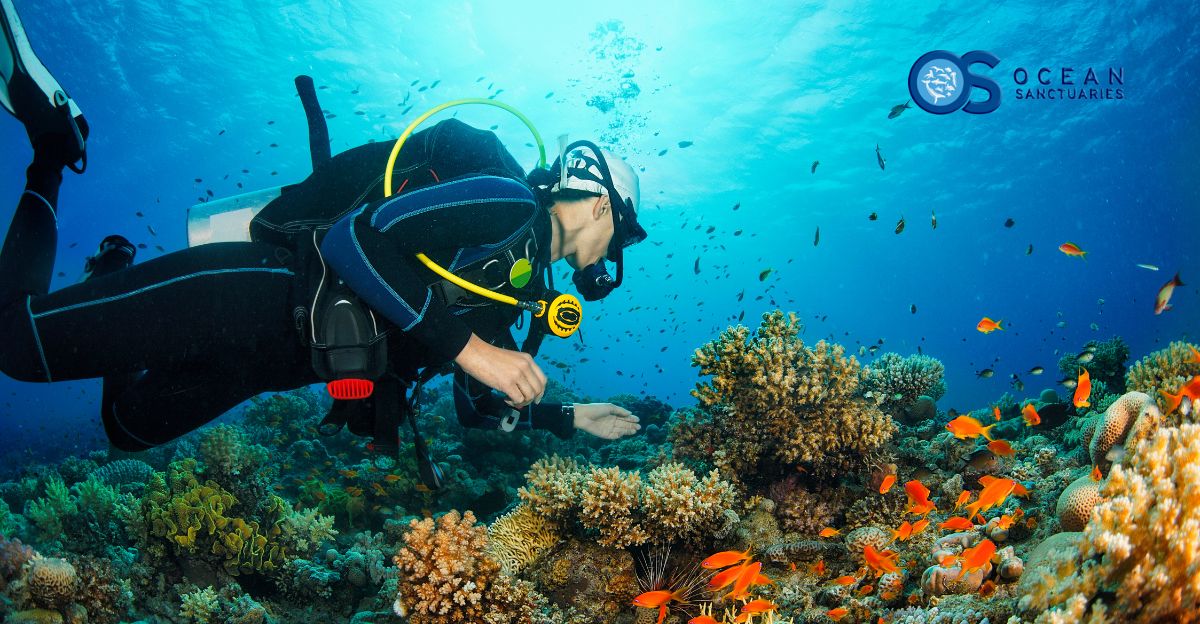After-School Explorers: How Students Are Becoming Citizen Scientists in Their Own Tide Pools
Hands-On Learning Along the Shoreline Is Inspiring the Next Generation of Marine Stewards
San Diego, CA – April 17, 2025 – When the final school bell rings, a growing number of students aren’t heading to screens or sports—they’re heading to the shore. Armed with waterproof notebooks, ID cards, and smartphones, these after-school explorers are transforming tide pool visits into real-world science. Thanks to a new wave of citizen science education led by Ocean Sanctuaries, young learners are now helping researchers monitor coastal ecosystems, one tide pool at a time. 🦀📚🌊
Through partnerships with local schools and youth organizations, Ocean Sanctuaries is training students to observe, document, and upload data on intertidal species—contributing to real marine biodiversity research. These efforts are not only boosting science literacy but also giving students a direct role in protecting their own coastal communities from climate change and habitat loss.
“This is more than just a beach field trip,” said an Ocean Sanctuaries coordinator. “These students are becoming marine scientists in their own neighborhoods, and the data they collect is helping shape the future of ocean conservation.” 🧠🔬
Why Tide Pools Are the Perfect Classroom
Tide pools are natural laboratories. Every few hours, they shift between marine and terrestrial ecosystems as the tides rise and fall. They’re home to creatures that can survive extreme heat, salinity, and wave action—making them powerful indicators of environmental change.
By studying tide pools after school or on weekends, students are helping track:
Species migration and distribution
Shell damage from ocean acidification
Invasive species presence
Early signs of pollution or algal blooms
These observations are submitted to global databases like iNaturalist, where marine scientists access and analyze the findings for conservation initiatives.
“We teach students that science doesn’t just happen in labs—it happens where they live,” said an environmental educator involved in the program.
How It Works: Turning Curiosity into Conservation
The Ocean Sanctuaries After-School Tide Pool Explorer Program is designed to integrate marine science into daily student routines in a fun, approachable, and impactful way. The program is open to students ages 8–18 and is supported by local educators, parents, and community leaders.
Program Highlights Include:
Weekly shoreline surveys after school
Hands-on training in species identification, data logging, and observation ethics
Waterproof field journals and custom tide pool species guides
Photo uploads to iNaturalist, contributing to live biodiversity maps
Mentorship opportunities from marine biologists and advanced youth researchers
Students often team up in “buddy explorer pairs” and complete simple 30–60-minute surveys that focus on tracking familiar species like sea stars, anemones, hermit crabs, mussels, and algae. Over time, they begin to recognize patterns, observe seasonal changes, and contribute meaningful data to ongoing studies.
What They’re Learning—and Teaching Us
Through this program, students are gaining valuable experience in:
Ecological observation and documentation
Understanding climate change through real data
Teamwork, leadership, and scientific thinking
Digital literacy through online data platforms
And the results speak for themselves.
Recent student-led surveys along the Southern California coast have helped identify:
A new seasonal pattern of nudibranch appearance
Early signs of mollusk shell thinning, likely tied to acidification
A rise in invasive algae species
Clear differences in species diversity across nearby tide pool zones
One local school group has already logged over 300 individual observations across just five weeks—data that is now part of an international database used by researchers around the world.
“The moment they realize their observations are being seen by real scientists? That’s when it clicks—they feel empowered,” said a teacher involved in the pilot program. “It’s science they can see and touch. It’s science that matters.”
Making Science Accessible—and Fun
The after-school approach makes marine research inclusive and flexible, especially for students from communities underrepresented in environmental science fields. No expensive tools, labs, or previous experience is required—just access to the coast, curiosity, and a willingness to learn.
Students also get creative by:
Building photo journals and mini-documentaries of their tide pool visits
Presenting findings at school science fairs
Inviting families to “community science days” where parents can participate and learn too
Ocean Sanctuaries provides free downloadable kits that include a guide for educators, printable field sheets, and a mobile data upload walkthrough.
About Ocean Sanctuaries
Ocean Sanctuaries is a nonprofit organization dedicated to empowering citizen scientists to protect the ocean. Through programs in biodiversity monitoring, education, and artificial reef research, Ocean Sanctuaries connects people of all ages to marine science and inspires hands-on conservation.
Media Contact
Barbara Lloyd
Phone: +1.858.633.7305
Email: [email protected]
Website: www.oceansanctuaries.org
